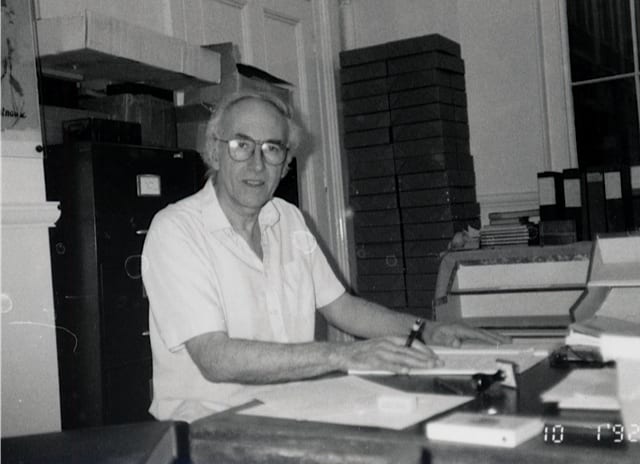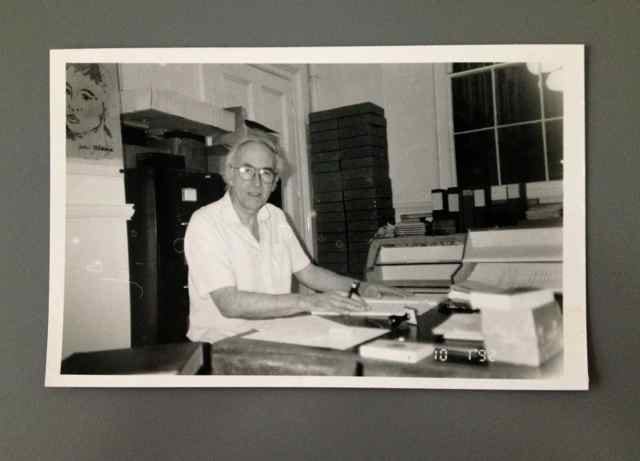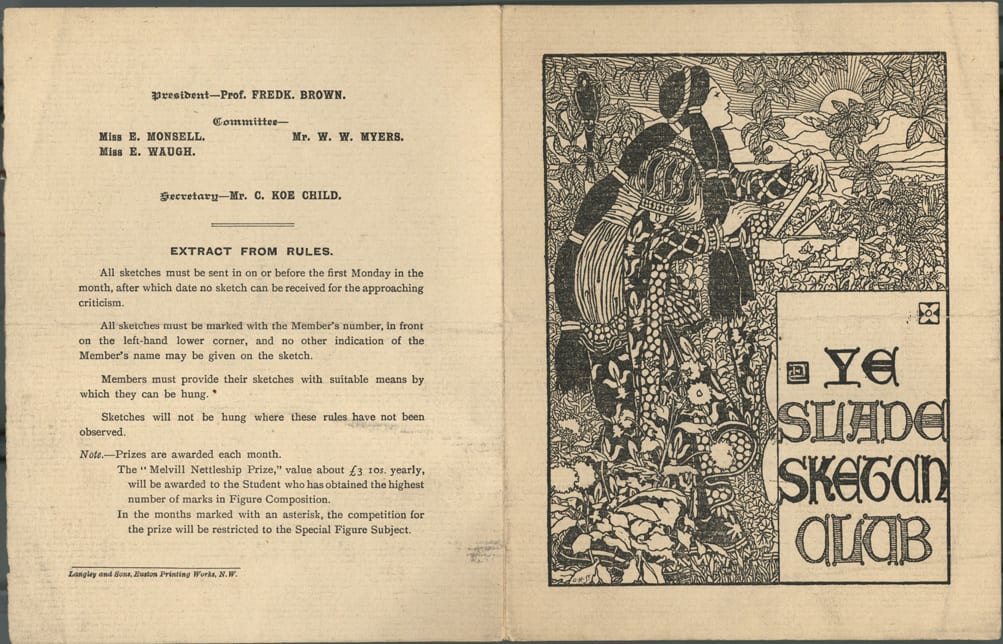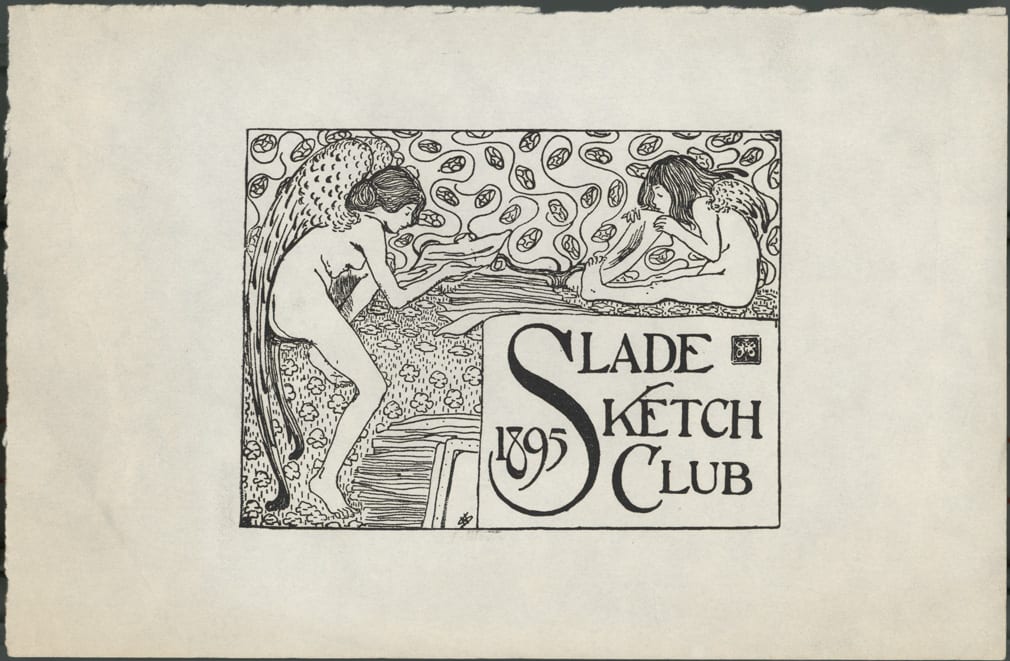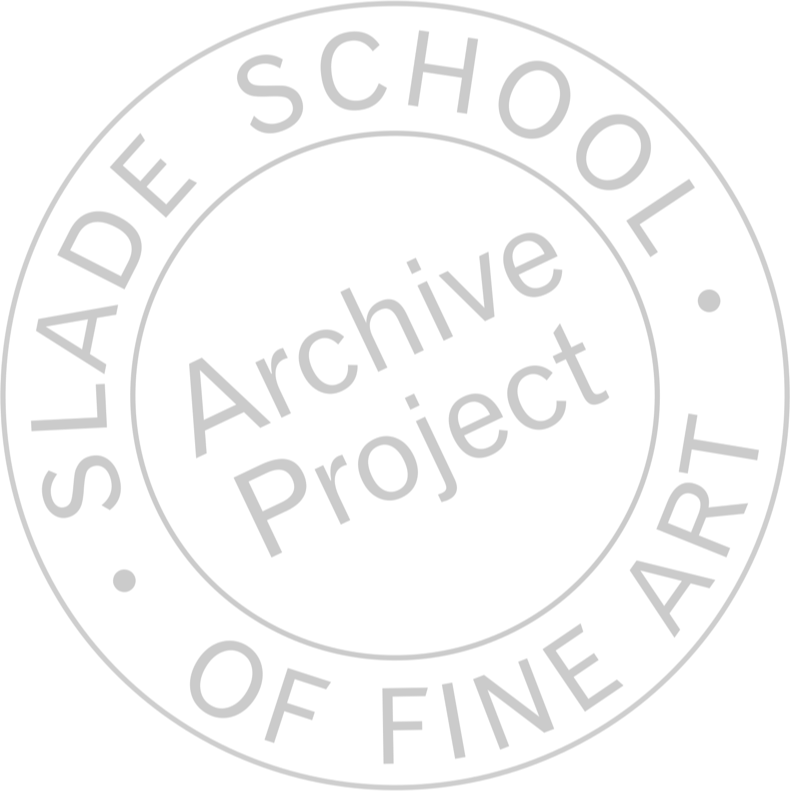Stephen Chaplin interview
By Slade Archive Project, on 27 February 2014
As part of his research into the Slade history, Stephen Chaplin had the foresight to undertake a series of audio interviews with former Slade staff and students in the early 1990s. Over the past few months we’ve been selecting highlights from those interviews and publishing them online through SoundCloud. But now the tables have turned and the interviewer has become the subject of the interview. Excerpts from an oral history recording undertaking with Chaplin in 2013 have just been added to the growing collection on SoundCloud, and provide rich evidence of his contribution to the ‘biography’ of the school’s archive. He reminisces about his entrance interview in 1952; the teaching staff’s interpretation of the so-called ‘Euston Road School’ orthodoxy; encountering Bernard Cohen painting as a young student; art history teaching at the Slade in the 1950s; working with Lawrence Gowing; and tells the story of how he came to be charged with the task of ‘sorting out’ the Slade archive. Listen to the clips here.
David Leverett on printmaking c. 1970s
By Slade Archive Project, on 9 January 2014
Inspired by the success of the recent Slade Print Fair, we’ve added more oral history clips on SoundCloud. Artist and former Slade tutor David Leverett reflects on printmaking at the Slade in the 1970s and the compelling paradigm shifts at work in the teaching of printmaking. Listen here.
Slade print fair
By Slade Archive Project, on 21 November 2013
Next week the Slade will host the inaugural Slade Print Fair.
The event will not only celebrate the Slade’s rich & varied printmaking culture, it will also raise much needed scholarship funds through the sale of prints and multiples by Slade alumni, staff and current students – the list of names is impressive indeed!
To mark the occasion, we’ve added some excerpts from an interview with Bartolomeu dos Santos to our growing list of highlights from the Slade oral history collection. Dos Santos (1931-2008) was a student at the Slade from 1956-1958 where he became enthralled by the possibilities of printmaking. He joined the staff in 1961, becoming Head of Printmaking and eventually, in 1994, Professor of Fine Art. In these excerpts he talks candidly (and complete with Portuguese accent) about his early days as a student at the Slade in the mid-1950s.
There will also be a Slade Archive Project display on site for the run of the print fair so if you’re in London do come by. It’s a great opportunity to see some of the intriguing items from the archive and to contribute to the new class photos crowdsourcing project.
28-30 November 2013
Slade Research Centre
, Woburn Square,
London
WC1H 0AB
Crowdsourcing the Slade class photos
By Slade Archive Project, on 28 October 2013
Today we launch our new online resource which brings to life some of the most requested items from the archive – the Slade class photos.
The Slade has a fascinating, but currently incomplete, collection of annual class photographs dating from 1931. The black and white panoramic images reflect the school’s rich history, capturing the likeness of Slade students and faculty through the decades. We’re asking former staff and students, scholars and members of the public to help us complete the collection and identify the sitters through a new website designed by UCL Centre for Digital Humanities.
We’ve already listed all of those who appear in this photograph from 1953, including William Coldstream, Lucien Freud, Henry Moore, Sam Ntiro, and Paula Rego. Can you help us identify other faces captured through the years?
The feedback provided by visitors to the site will result in a dynamic archive and research resource, giving us an opportunity to compare crowdsourcing platforms and begin to trace the impact of Slade alumni around the world.
Visit the new website here.
This project is a collaboration between UCL Centre for Digital Humanities and the Slade School of Fine Art, as part of the Slade Archive Project.
Slade oral history
By Slade Archive Project, on 15 October 2013
Thanks to funding from the Andor Charitable Trust we have been able to digitize a rich collection of oral history interviews made by Stephen Chaplin in the 1990s as part of his research on the history of the Slade. The recordings include conversations with Bernard Cohen, Stanley Jones, Olga Lehmann and Barto dos Santos, along with other former Slade staff and students. Chaplin aimed to interview a cross-section of people – not only the most prominent and senior figures. Even William Coldstream’s secretary, Margaret Bennett, was interviewed.
Our three project interns, Patrick Sykes, Neelam Choudhry and Sadie Hough, have produced summaries of the recordings and selected excerpts for streaming on the Slade Archive Project SoundCloud profile.
The first in a series of highlights from this collection is an interview with Slade alumna and renowned artist, illustrator and theatre designer, Olga Lehmann (1912-2001). Lehmann studied at the Slade in the early 1930s under the tutelage of Henry Tonks and Randolph Schwabe, and specialised in theatrical design under Vladimir Polunin. She quickly acquired a reputation for her work as a muralist, portrait painter and costume designer and her illustrations were regularly featured in Radio Times.
Lehmann’s oral history recording with Stephen Chaplin was conducted in 1992. She provides a lively account of her time at the Slade, reflects on the bohemian world of Fitzrovia, on being a young female artist prior to the outbreak of the Second World War, and on studying and socialising with some of the notable figures of her era. She speaks candidly about their words of advice, the dynamics between the tutors and students, the daily rituals at the school – and of the privilege of being admitted to the life drawing room.
In the weeks to come we’ll be featuring more of these highlights from this Slade oral history collection. Stay tuned!
An earlier Slade archive project
By Slade Archive Project, on 14 October 2013
‘The papers had been taken from Room 8 and lodged on the floor of the room at the east of the Slade. I remember looking at them in dismay, making a drawing of the heap of boxes, discarded portable typewriter and [a] sculptured head never collected by a student. Their shelves had been removed from the Office, most of the books and pamphlets had gone to the College Library, and personal records were under the main stairs …
There were also collections of photographs, personal depositions, but no artwork at all. I began to ask for material from old students to augment the holdings. Shelving was bought and an order made among the disintegrating boxes. I asked Ian [Tregarthen Jenkin] to come to see. Did my order in any way replicate his former, working order? He took a quick look, smiled; said ‘You’re doing a great job!’, and left. At that point I realised that an archivist is there to make decisions: no one else much minds what happens, apart from obtaining a quick answer to their question.’ (Stephen Chaplin, Slade Archive Reader, UCL Special Collections MS ADD 400, p. 14)
From 1990-97, scholar and former Slade student Stephen Chaplin undertook an ambitious project to rescue the Slade archives. Chaplin began to catalogue and re-house the collection of documents, photographs and objects, which up to that point had been dispersed in unsorted boxes in back corners of offices, studio spaces and family archives. On the advice of Jean Spencer, then Tutor to the Students & Slade Secretary, he also set out to ‘computerise’ these archive records – though the limitations of the early electronic catalogue systems would prove to cause as many challenges as solutions.
As a retired art historian and Slade alumnus (1952-55), Chaplin also used oral history as a way of capturing the everyday experiences of those at the Slade. He conducted audio interviews and sought contributions to the archive from alumni and their families in the form of letters, memoirs, photographs and other documentation. He faithfully answered scholars’ research queries and noted and logged the who, what, where and when of as much Slade history as he could gather. During these years, he kept a personal diary to document his observations of ‘the daily life of the school as seen though the marginal vision of an archivist’.
With funding from the Leverhulme Trust and ongoing support from UCL Library and UCL Art Museum (then known as the Strang Print Room), Chaplin’s work provided an invaluable foundation on which to build a framework for the Slade’s growing archive. But technological challenges and finite resources limited his ambitions. The computer system crashed at a key moment and some of the index was lost. It was too early for the internet to be of much help in drawing the networks of connections between living and written history, and the mass of information gathered could not be encompassed in publishable form without significant editorial support. Chaplin’s contribution rests in large part as an unpublished manuscript and archive index that he called ‘the Slade Archive Reader’, now housed in UCL Special Collections [MS ADD 400]. The document provides an invaluable overview of the archive, functioning as both a finding aid and a summary of the first century of the school’s history.
Slade Sketch Club, 1899
By Slade Archive Project, on 24 September 2013
Another remnant of ‘Ye’ Slade Sketch Club, a beautiful little leaflet dating from 1899.
Slade students were encouraged to join the Sketch Club, which was structured around a series of set composition subjects and monthly prizes. The 18th-century traditional song and poem ‘Sally in our Alley’ included in the list of composition subjects shows how the club encouraged the exploration of themes beyond traditional biblical and classical subjects. The inclusion of poetry, drama and literature as optional subjects continued under William Coldstream’s professorship. Slade alumni of the 1950s, for instance, have described how T.S. Eliot’s classic poem ‘The Waste Land’ and Dylan Thomas’s 1954 radio drama ‘Under Milk Wood’ were two of the themes set for the summer composition competition. It’s not clear when (or why) the club disbanded; any leads from Slade alumni on this subject would be most welcome.
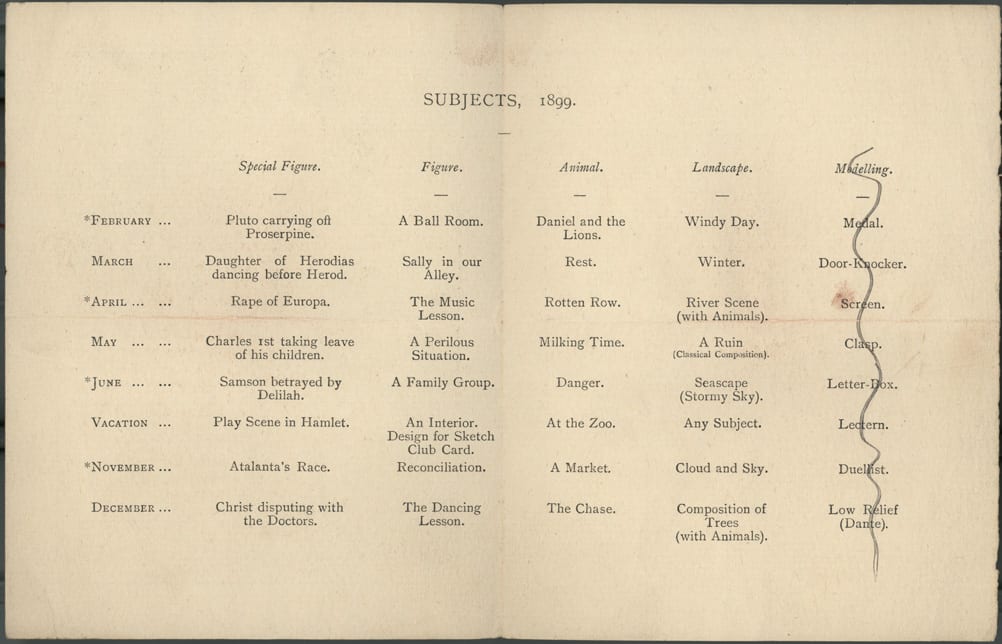
Slade Sketch Club, 1895
By Slade Archive Project, on 16 September 2013
Evidence of the Slade Sketch Club found carefully tucked away in an archive box.
Addendum
By Slade Archive Project, on 4 September 2013
Archive research is full of fascinating twists and turns. By their nature archives are subject to periods of neglect and changing collection practices so they can be a maze of false leads and missing links. Archives are also subject to well-intended but inaccurate interpretation.
And so, an addendum to a previous post. Reading former Slade tutor William Townsend’s journal I came across this entry, dated 28 October 1946:
… at tea-time with Bill [Coldstream], Sam Carter and [Thomas] Monnington, Monnington gave us a remarkable, objective but nonetheless macabre account of the taking of Tonks’s death mask, in which undertaking he was the assistant of [Alfred] Gerrard. Monnington, who was Tonks’s downstairs neighbour, the closest friend of his last days and in his illness, could not forget his friendly feelings even for the old man’s dead body when the mask would not be detached from the face and he had to assist Gerrard in a tug of war, first on the bed and afterwards as this did not allow for the exercise of all their strength, on the floor, for hours, to remove it. It was a very good mask apparently. Bill is most anxious to get a cast of it – he grows more and more attached to his days at the Slade, the doctrine of Tonks, his teaching and the memory of the master himself.*
This excerpt tells an entirely different (and indeed more layered) story of the casting of Tonks’s death mask than the one described in an earlier blog post. It was in fact Alfred Gerrard and Thomas Monnington who made the mask, not William Coldstream. Let the record hereby stand corrected.
*The Townsend Journals: An Artist’s Record of His Times 1928-1951,
ed. Andrew Forge, Tate Gallery Publications, London, 1976, p.72.
Stamps!
By Slade Archive Project, on 19 August 2013
Remember these? I spent a few minutes trying out these remnants of a bygone era of administration … and found signatures of former Slade Professors Bernard Cohen and Patrick George in the mix.
 Close
Close


